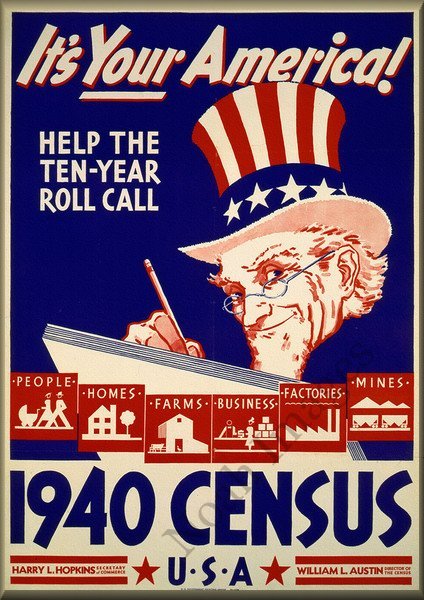The 2012 Hugo Award and John W. Campbell Award nominees have been announced. The Chicon 7 committee reports 1101 valid nominating ballots were received and counted.
Best Novel (932 ballots)
Among Others by Jo Walton (Tor)
A Dance With Dragons by George R. R. Martin (Bantam Spectra)
Deadline by Mira Grant (Orbit)
Embassytown by China Miéville (Macmillan / Del Rey)
Leviathan Wakes by James S. A. Corey (Orbit)
Best Novella (473 ballots)
Countdown by Mira Grant (Orbit)
The Ice Owl by Carolyn Ives Gilman (The Magazine of Fantasy & Science Fiction November/December 2011)
Kiss Me Twice by Mary Robinette Kowal (Asimov’s June 2011)
The Man Who Bridged the Mist by Kij Johnson (Asimov’s September/October 2011)
The Man Who Ended History: A Documentary by Ken Liu (Panverse 3)
Silently and Very Fast by Catherynne M. Valente (WSFA)
Best Novelette (499 ballots)
“The Copenhagen Interpretation” by Paul Cornell (Asimov’s July 2011)
“Fields of Gold” by Rachel Swirsky (Eclipse Four)
“Ray of Light” by Brad R. Torgersen (Analog December 2011)
“Six Months, Three Days” by Charlie Jane Anders (Tor.com)
“What We Found” by Geoff Ryman (The Magazine of Fantasy & Science Fiction March/April 2011)
Best Short Story (593 ballots)
“The Cartographer Wasps and the Anarchist Bees” by E. Lily Yu (Clarkesworld April 2011)
“The Homecoming” by Mike Resnick (Asimov’s April/May 2011)
“Movement” by Nancy Fulda (Asimov’s March 2011)
“The Paper Menagerie” by Ken Liu (The Magazine of Fantasy & Science Fiction March/April 2011)
“Shadow War of the Night Dragons: Book One: The Dead City: Prologue” by John Scalzi (Tor.com)
Best Related Work (461 ballots)
The Encyclopedia of Science Fiction, Third Edition edited by John Clute, David Langford, Peter Nicholls, and Graham Sleight (Gollancz)
Jar Jar Binks Must Die… and Other Observations about Science Fiction Movies by Daniel M. Kimmel (Fantastic Books)
The Steampunk Bible: An Illustrated Guide to the World of Imaginary Airships, Corsets and Goggles, Mad Scientists, and Strange Literature by Jeff VanderMeer and S. J. Chambers (Abrams Image)
Wicked Girls by Seanan McGuire
Writing Excuses, Season 6 by Brandon Sanderson, Dan Wells, Howard Tayler, Mary Robinette Kowal, and Jordan Sanderson
Best Graphic Story (339 ballots)
Digger by Ursula Vernon (Sofawolf Press)
Fables Vol 15: Rose Red by Bill Willingham and Mark Buckingham (Vertigo)
Locke & Key Volume 4, Keys to the Kingdom written by Joe Hill, illustrated by Gabriel Rodriguez (IDW)
Schlock Mercenary: Force Multiplication written and illustrated by Howard Tayler, colors by Travis Walton (The Tayler Corporation)
The Unwritten (Volume 4): Leviathan created by Mike Carey and Peter Gross. Written by Mike Carey, illustrated by Peter Gross (Vertigo)
Best Dramatic Presentation (Long Form) (592 ballots)
Captain America: The First Avenger, screenplay by Christopher Markus and Stephan McFeely, directed by Joe Johnston (Marvel)
Game of Thrones (Season 1), created by David Benioff and D. B. Weiss; written by David Benioff, D. B. Weiss, Bryan Cogman, Jane Espenson, and George R. R. Martin; directed by Brian Kirk, Daniel Minahan, Tim van Patten, and Alan Taylor (HBO)
Harry Potter and the Deathly Hallows Part 2, screenplay by Steve Kloves; directed by David Yates (Warner Bros.)
Hugo, screenplay by John Logan; directed by Martin Scorsese (Paramount)
Source Code, screenplay by Ben Ripley; directed by Duncan Jones (Vendome Pictures)
Best Dramatic Presentation (Short Form) (512 ballots)
“The Doctor’s Wife” (Doctor Who), written by Neil Gaiman; directed by Richard Clark (BBC Wales)
“The Drink Tank’s Hugo Acceptance Speech,” Christopher J Garcia and James Bacon (Renovation)
“The Girl Who Waited” (Doctor Who), written by Tom MacRae; directed by Nick Hurran (BBC Wales)
“A Good Man Goes to War” (Doctor Who), written by Steven Moffat; directed by Peter Hoar (BBC Wales)
“Remedial Chaos Theory” (Community), written by Dan Harmon and Chris McKenna; directed by Jeff Melman (NBC)
Best Semiprozine (357 ballots)
Apex Magazine edited by Catherynne M. Valente, Lynne M. Thomas, and Jason Sizemore
Interzone edited by Andy Cox
Lightspeed edited by John Joseph Adams
Locus edited by Liza Groen Trombi, Kirsten Gong-Wong, et al.
New York Review of Science Fiction edited by David G. Hartwell, Kevin J. Maroney, Kris Dikeman, and Avram Grumer
Best Fanzine (322 ballots)
Banana Wings edited by Claire Brialey and Mark Plummer
The Drink Tank edited by James Bacon and Christopher J Garcia
File 770 edited by Mike Glyer
Journey Planet edited by James Bacon, Christopher J Garcia, et al.
SF Signal edited by John DeNardo
Best Fancast (326 ballots)
The Coode Street Podcast, Jonathan Strahan & Gary K. Wolfe
Galactic Suburbia Podcast, Alisa Krasnostein, Alex Pierce, and Tansy Rayner Roberts (presenters) and Andrew Finch (producer)
SF Signal Podcast, John DeNardo and JP Frantz, produced by Patrick Hester
SF Squeecast, Lynne M. Thomas, Seanan McGuire, Paul Cornell, Elizabeth Bear, and Catherynne M. Valente
StarShip Sofa, Tony C. Smith
Best Professional Editor — Long Form (358 ballots)
Lou Anders
Liz Gorinsky
Anne Lesley Groell
Patrick Nielsen Hayden
Betsy Wollheim
Best Professional Editor — Short Form (512 ballots)
John Joseph Adams
Neil Clarke
Stanley Schmidt
Jonathan Strahan
Sheila Williams
Best Professional Artist (399 ballots)
Dan dos Santos
Bob Eggleton
Michael Komarck
Stephan Martiniere
John Picacio
Best Fan Artist (216 ballots)
Brad W. Foster
Randall Munroe
Spring Schoenhuth
Maurine Starkey
Steve Stiles
Taral Wayne
Best Fan Writer (360 ballots)
James Bacon
Claire Brialey
Christopher J Garcia
Jim C. Hines
Steven H Silver
John W. Campbell Award for Best New Writer (396 ballots)
Award for the best new professional science fiction or fantasy writer of 2010 or 2011, sponsored by Dell Magazines (not a Hugo Award).
Mur Lafferty
Stina Leicht
Karen Lord *
Brad R. Torgersen *
E. Lily Yu
*2nd year of eligibility
The full press release follows the jump.
Continue reading →


